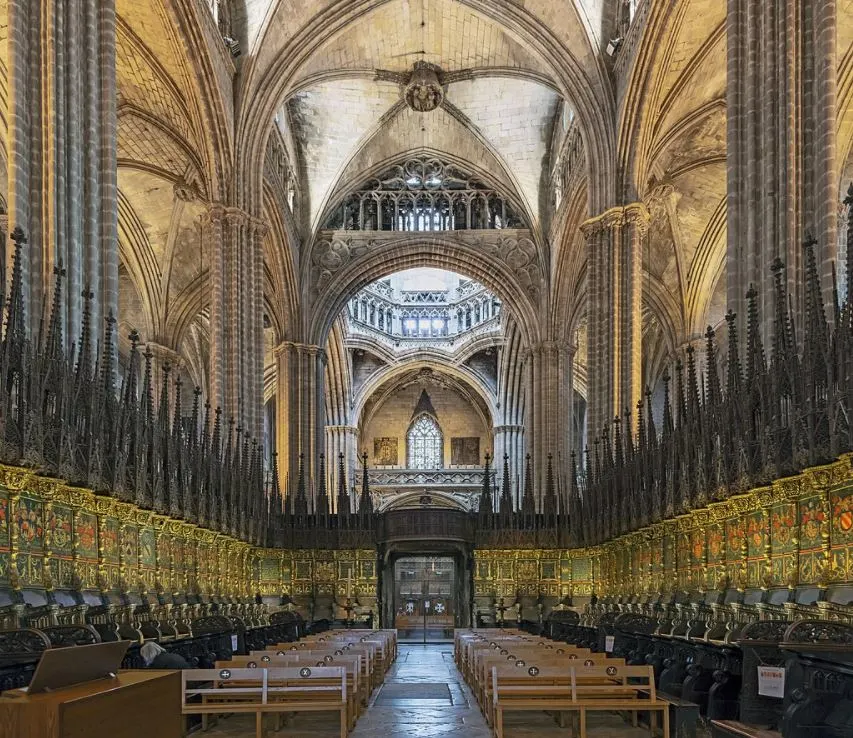When we think of buildings in Barcelona, there’s one particular structure that comes to mind, right?
Yes, the Sagrada Família, Gaudi’s masterpiece which seems impossible to be completed (even though it won’t take that long anymore).
The surprising part is that this isn’t the main cathedral in the city as it’s only classified as a minor Basilica. The main Cathedral is called the Cathedral of the Holy Cross and Saint Eulalia.
In this post, you’ll discover a list of some interesting Barcelona Cathedral facts, a remarkable church that is often overshadowed by its famous counterpart!
1. It’s located right in the heart of the city
Barcelona Cathedral is located within the “Ciutat Vella” district of the city. This area is numbered 1 because it’s considered to be the oldest section of the city.
The Gothic Cathedral is situated within the Gothic quarter of the city’s Old Town, an area that features a lot of other famous landmarks in Barcelona.
Within a radius of just a few hundred meters you can find the “Parc de la Ciutadella,” the “Palau Güell,” the “Palau de la Música Catalana,” and the “Basílica de Santa Maria del Pi,” another famous Gothic Cathedral just nearby.

2. It was dedicated to the co-patron saint of Barcelona
The cathedral was dedicated to one of the patron saints of Barcelona, a 13-year-old girl named Eulalia (290-303) who was martyred in the early 4th century. This was a period of heavy persecution of Christians under the Roman Emperors Diocletian and Maximian.
When the Roman officials came to Barcelona to issue a decree regarding the persecution, Eulalia reportedly stood up to them. As a result, she was stripped naked, tied to an X-shaped cross, and tortured until she was dead.

Upon her death, a snowstorm covered up her naked body, and a dove flew from her mouth, resulting in Eulalia being canonized in the year 633. Her tomb is located within the crypt of Barcelona Cathedral.

3. One section of the cathedral houses 13 geese for a particular reason
If you walk around the cloister of the cathedral, you shouldn’t be surprised to see some unexpected inhabitants. 13 geese are roaming around this section of the church and permanently live here.
There are always 13 geese as this is a reference to the age of Eulalia when she was martyred in the year 303. The occasional pigeon you find here is just a temporary visitor.
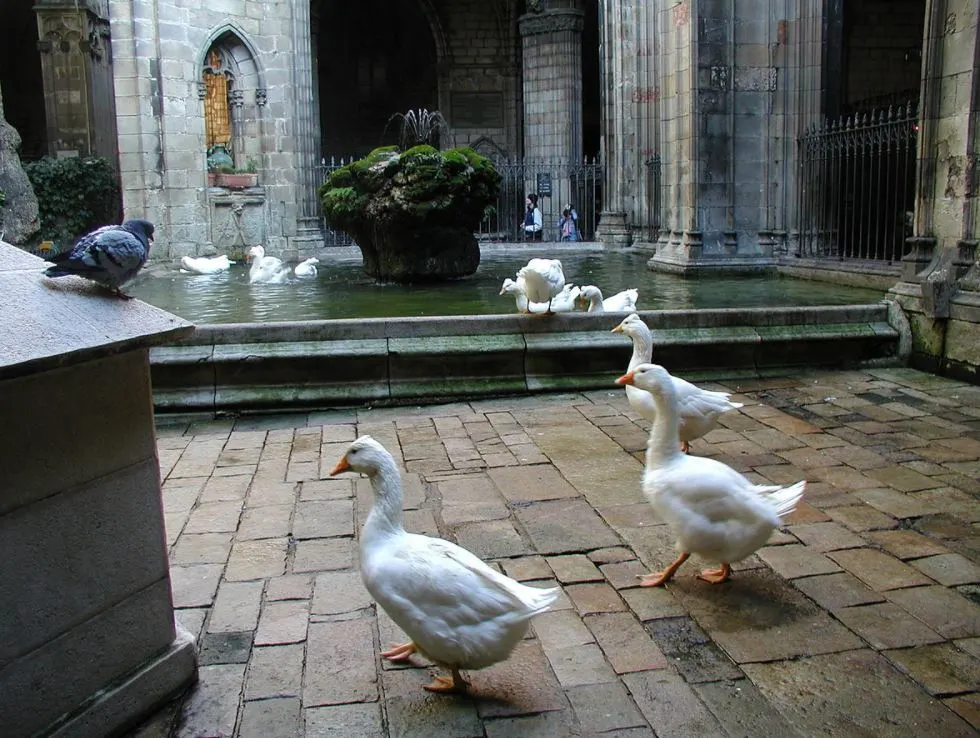
4. It’s the most important church in Barcelona
Even though the Sagrada Família is without a doubt the best-recognized and most famous church in Barcelona, it’s not the most important one. It has only been consecrated and declared a minor Basilica by Pope Benedict XVI on November 7, 2010.
Barcelona Cathedral is the most important church in the city and also the seat of the Archbishop of Barcelona.
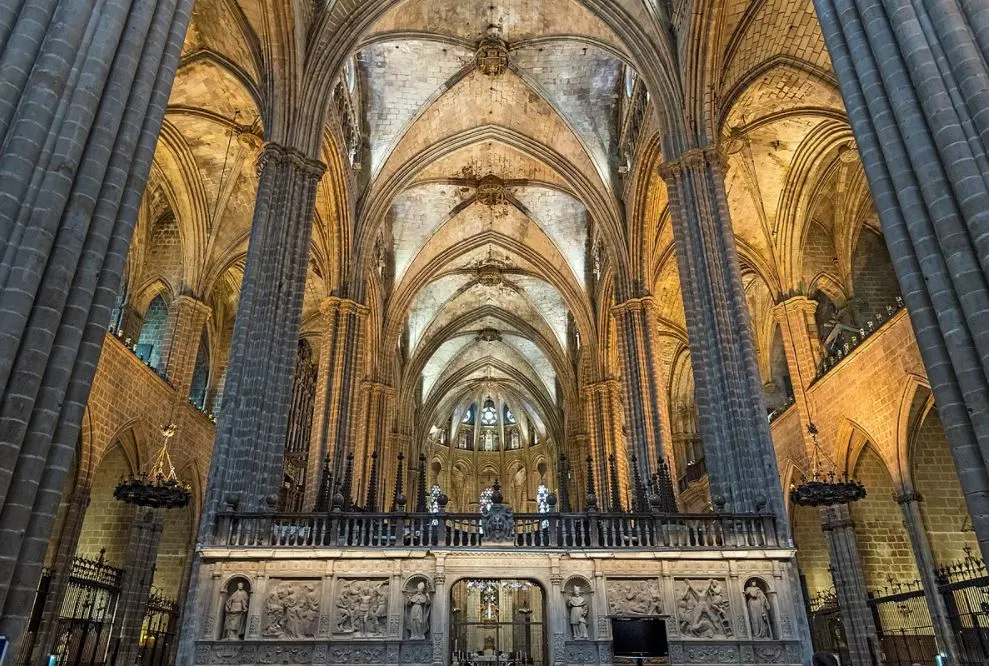
5. There were buildings on the site dating back to the 4th century
The main reason that the cathedral is much more important is that it has a history extending all the way back to the 4th century, as opposed to the late 19th century of the Sagrada Família (construction only started in 1882).
Remains of early Christian and Visigothic structures have been found on the site, including:
- A baptistery (fourth century)
- A basilical hall (fifth century)
- A cross-shaped church (sixth-seventh century)
- The Bishop’s palace (sixth-seventh century)
The remains of these early structures are now displayed in the “Barcelona City History Museum” archaeological underground complex. This museum is located just across from the church on the “Plaça del Rei.”
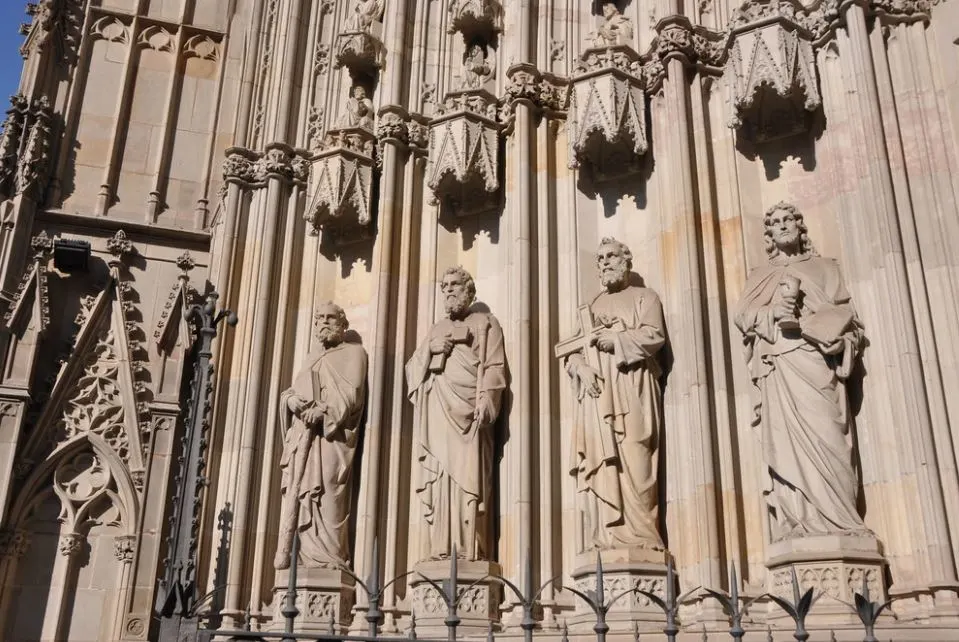
6. The Gothic cathedral was built on top of an earlier Romanesque church
In the year 985, Muslim commander al-Mansur (Almanzor) attacked Barcelona and this resulted in severe damage to the early structures on the site.
Less than a century later in the year 1046, a new church was erected in the Romanesque architectural style. This structure was commissioned by the Count of Barcelona and his wife, Ramon Berenguer I, and Almodis.
This Romanesque church was consecrated in the year 1058 and the current Gothic Cathedral was built on top of this original structure. The man who commissioned it, Ramon Berenguer I, was buried here and his tomb is still present in the cathedral today.

7. It took 150 years before the cathedral was completed
The foundation stone of the Gothic Cathedral was laid on May 1, 1298, during the reign of James II the Just (1267-1327) who was the King of Aragon and the Count of Barcelona between 1291 and 1327.
Even though he oversaw construction for a period of 36 years, he never saw the cathedral completed. The main structure and its façade were only completed in 1417 and the cathedral’s cloister was only finished in 1448.
This means that it took a total of 150 years to build this marvelous landmark!
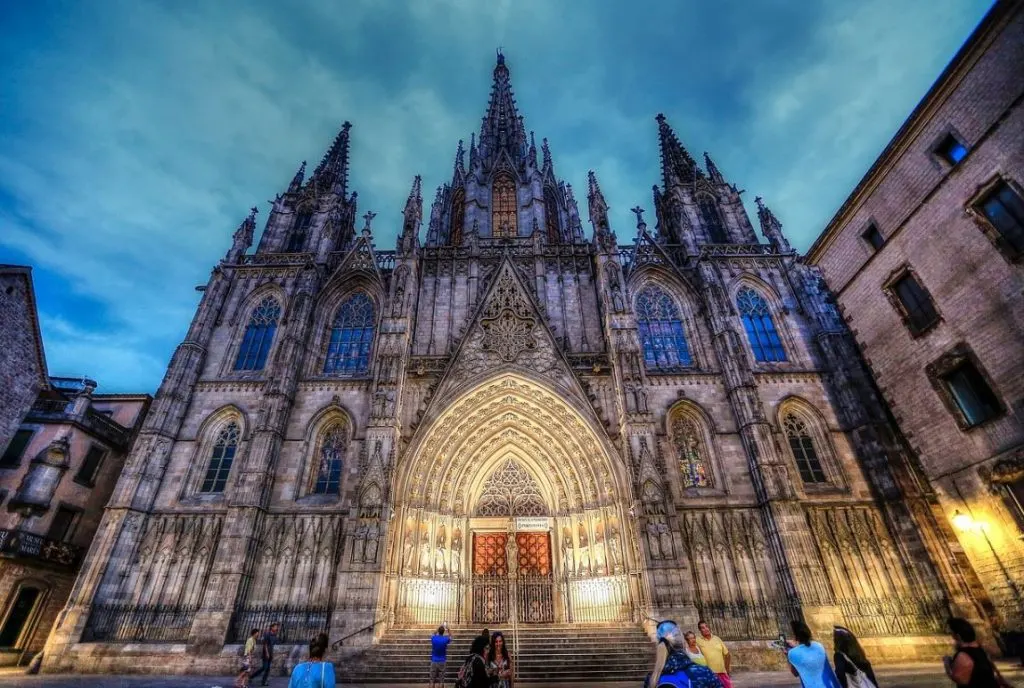
8. The façade and central tower of the cathedral were only completed in 1913
One of the most remarkable Barcelona Cathedral facts is that the original façade of the cathedral was just plain as it didn’t feature the elaborate decorations it has today.
The Gothic elements of the façade were only added in the late 19th century, a project that also included the central tower and that was completed in the year 1913.
The design, however, of the façade and tower was already completed in the 15th century
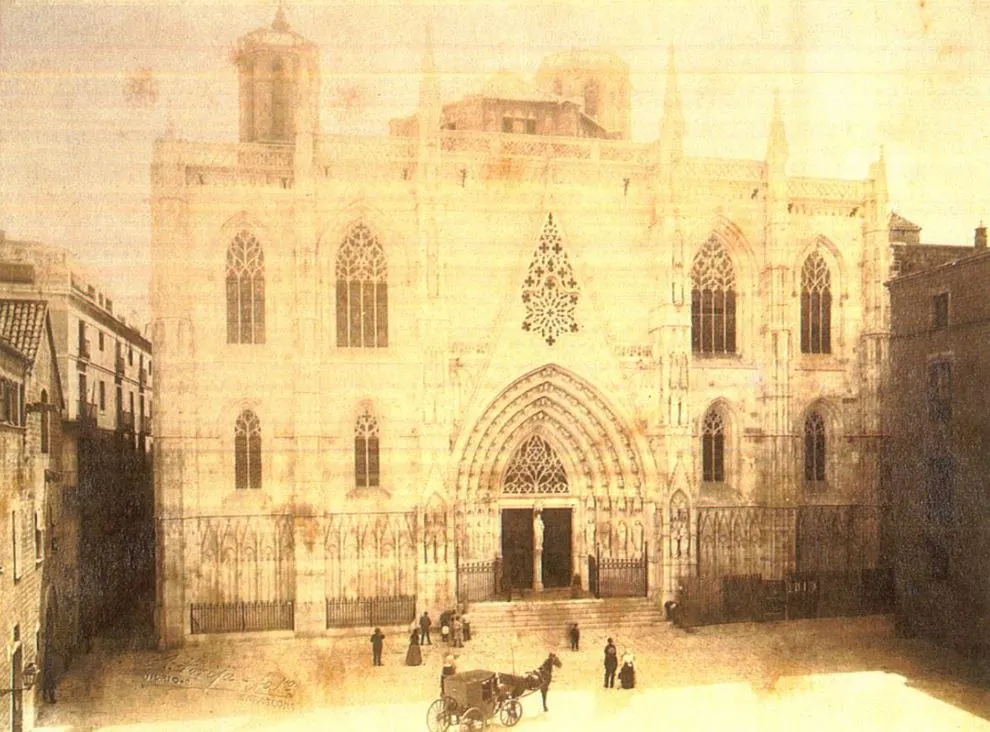
9. The roof of the cathedral features plenty of mythical creatures
The cathedral is elaborately decorated with sculptures of various Saints and Biblical figures. The roof features a wide variety of animals and mythical creatures as well.
Not all of these are equally friendly looking as the gargoyles, an architectural element to avoid rainwater running down the masonry, appear quite scary upon closer inspection!
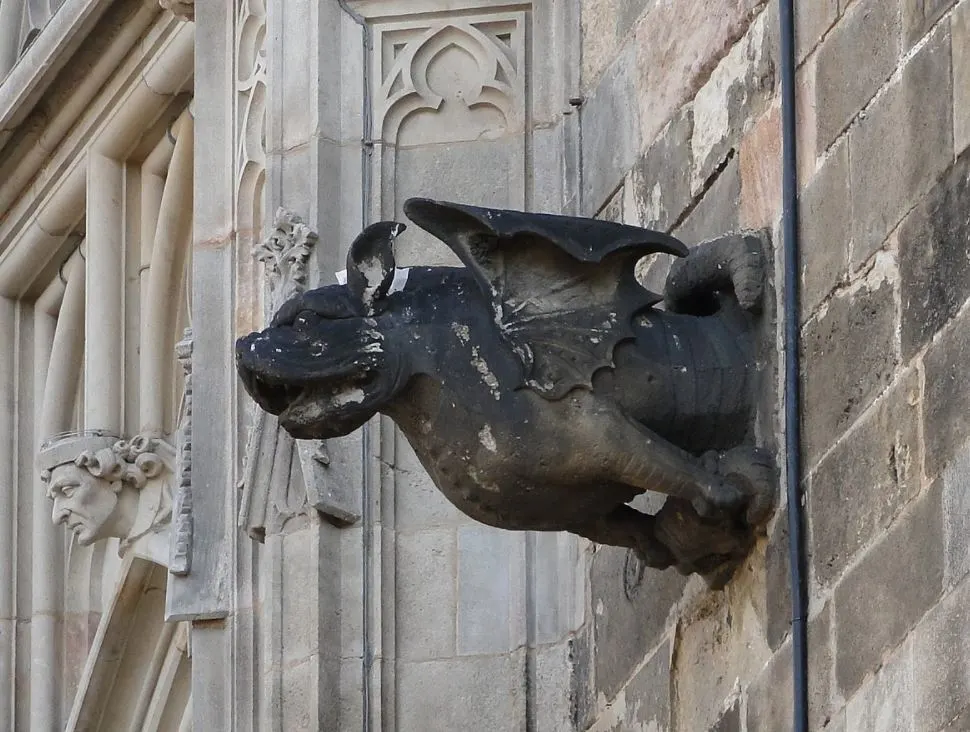
10. Saint Eulalia isn’t the only saint buried in the cathedral
The cathedral features a side chapel referred to as the Chapel of the Holy Sacrament and the Holy Christ of Lepanto. It was originally built in the year 1407 as the chapterhouse but was completely rebuilt in the 17th century.
The reason it was rebuilt was so it could house the tomb of another important Saint naled Olegarius. He was the Bishop of Barcelona from 1116 until he died in 1137. He was canonized in the year 1675 and March 6, his birthday, is still the day of a celebration today.

11. A dancing egg is placed on the cloister’s fountain once a year
Another tradition that is upheld until today is that of the “dancing egg.” Every year, an egg is placed on top of the jet of the fountain located in the cathedral’s cloister.
This particular tradition takes place on the day of Corpus Christi and is believed to have originated at the cathedral in Barcelona as well.

12. The choir seats feature the coats-of-arms of an order founded in 1430
The most amazing area inside the church is that of the choir. This section features carved choir seats that are marvelously decorated in a Gothic design.
These chairs also depict the coats-of-arms of the knights of the “Order of the Golden Fleece,” an order established by Philip the Good in 1430. Charles V chose Barcelona as the site of the chapter in 1518.
The chairs were decorated the same year in preparation for the first sitting of the chapter in 1519.
